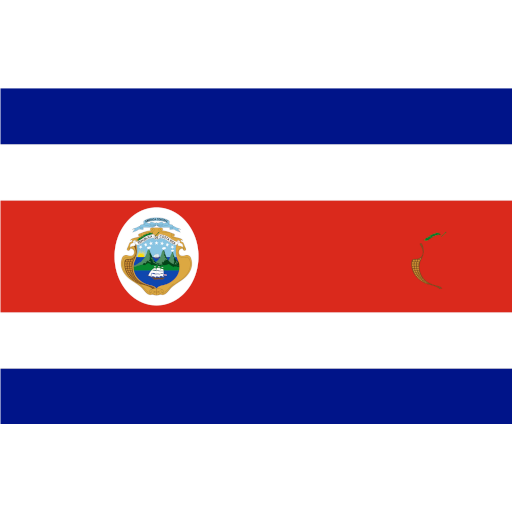According to the U.S. trade policy published on January 20, 2025 " America First Trade Policy Memorandum"1, the U.S. authorities should have investigated the causes of unfair and unbalanced trade.
President Donald Trump ordered the Secretary of Commerce to investigate the causes and implications of trade deficits and propose solutions, such as a global supplemental tariff.2 The investigation also seeks to identify the countries imposing the highest tariffs that have generated a trade deficit with the United States and recommend specific tariffs for each country.
Reciprocal Tariffs
On April 2, 2025, the reciprocal tariff policy "Regulating imports with a reciprocal tariff to rectify trade practices that contribute to large and persistent annual United States goods trade deficits" was published on the official White House website.3.
The policy establishes two phases for the application of reciprocal tariffs:
|
Phases
|
Countries
|
Reciprocal tariff
|
Effective date
|
Special conditions
|
|
1
|
Worldwide (except for countries with specific reciprocal tariffs)
|
10%
|
April 5, 2025
|
The tariff is in addition to other tariffs imposed by the US. Read FAQ
|
|
2
|
Countries with specific reciprocal tariffs
|
See rates in Annex I*.
|
April 9, 2025
|
A tariff increase is contemplated.
The tariff is in addition to other tariffs imposed by the US. Read FAQ
|
Annex I: Country-specific ad valorem duty rates.

Customs and Border Protection (CBP) will issue procedures that importers must follow to comply with these changes.
What actions should I take?
A reconfiguration of international trade, increased costs, and challenges related to compliance with new regulations are anticipated. Companies must adapt proactively to reduce financial, customs, and tax risks throughout the value chain.
It is necessary to implement a comprehensive analysis and mitigation strategy involving areas such as supply chain, foreign trade, customs, finance, tax, and transfer pricing.
How can we help you?
|
Area
|
Action
|
|
Supply Chain - Foreign Trade
|
a) Determination of Origin and Country of Origin Marking of the USMCA.
|
|
b) Preventive USMCA origin verification audit.
|
|
c) General analysis of origin (markets).
|
|
Transfer Pricing
|
a) Functional analysis and recharacterization of intercompany
transactions.
|
|
b) Evaluation and adjustment of transfer pricing policies
|
|
Taxes
|
a) National, international and cross-border tax diagnosis based on operational restructurings, asset disposal and exit strategies.
|
|
Consulting
|
a) Analysis and strategies to mitigate the impact of tariffs.
|
|
b) Cost model in response to tariff impact.
|
To evaluate tariff impact on a country-specific basis, we list the cases of Mexico, Canada, China, Colombia and Costa Rica.
Case: Mexico
|
Countries
|
Tariff (Migration/Drug Trafficking)
|
Reciprocal Tariff
|
Affected Assets
|
|
Mexico
|
25%4
|
12%
(To be applied until the end of the 25% tariff)
|
All products from Mexico
Exception: Products complying with USMCA origin
|
|
Affected Countries
|
% Tariff
|
Sector
|
Affected Assets
|
|
General
|
25%
|
Steel and aluminum
|
All steel and aluminum products.
Exception: U.S. steel and aluminum.
|
|
General
|
25%
|
Automotive
|
All imported automobiles
USMCA: The 25% tariff will apply only to the value of non-originating parts from the treaty countries. Effective April 3, 2025.
|
|
General
|
25%
|
Automotive
|
All the following auto parts:
- Engines and engine parts
- Transmissions and powertrain parts
- Electrical components: Including batteries and advanced electronics.
USMCA: The 25% tariff will apply only to the value of non-originating parts from the treaty countries. Effective May 3, 2025.
|
|
Countries
|
Tariff (Migration/Drug Trafficking)
|
Reciprocal Tariff
|
Affected Assets
|
|
Canada
|
25% General
10% Energy products and potash. 5
|
12%
(To be applied until the end of the 25% tariff)
|
All products from Canada
Exception: products complying with USMCA origin
|
|
Countries
|
Tariff (synthetic opioids)
|
Reciprocal Tariff
|
Affected Assets
|
|
China
|
20%6
|
34%
|
All products from China
Some products sanctioned under section 301 may be subject to trade remedies in addition to the above.7
The reciprocal tariff will also apply to Hong Kong and Macao.
|
Colombia and Costa Rica cases.
|
Countries
|
Reciprocal Tariff
|
Affected Assets
|
Special considerations
|
|
Colombia
|
10%
|
All products from Colombia
|
The reciprocal tariff applies regardless of the free trade agreement with the United States. 8
Colombian products are still competitive in the U.S. market, for example: Colombia is the second exporter of coffee to the U.S. and its main competitor (Brazil) pays the same reciprocal tariff of 10%; also, Vietnam has imposed a tariff of 46% on its competitor of the same product. 9
|
|
Costa Rica
|
10%
|
All products of
Costa Rica
|
The reciprocal tariff applies regardless of the Central America-United States Free Trade Agreement.10
The most affected U.S. imports from Costa Rica include medical devices, pineapple, bananas and coffee. 11
|
What's next?
There is no date for the end of these tariffs, and each affected country may generate reciprocal measures, so tariff changes are expected12 as the different countries negotiate with the United States. It will be important to keep abreast of the information emerging in the next few days regarding updates on the issue and Mexico's posture.
At JA DEL RÍO, we offer strategic services to advise you on this and any other considerations, ensuring your company remains compliant with these new regulations. Please contact us at: contacto@jadelrio.com.
Bernardo Del Río - Managing Partner
Antonio Ávila - Foreign Trade Partner
This newsletter is for information purposes only and should not be construed as a legal, tax or accounting opinion. Since each situation may present specific particularities, it is recommended that you analyze the specific facts of each case with the assistance of your legal and tax advisors before making any decision based on this information.
*References:
























